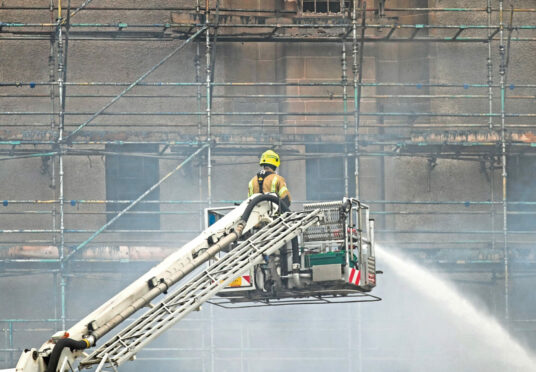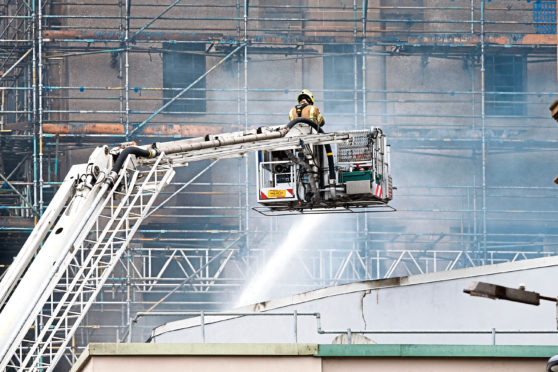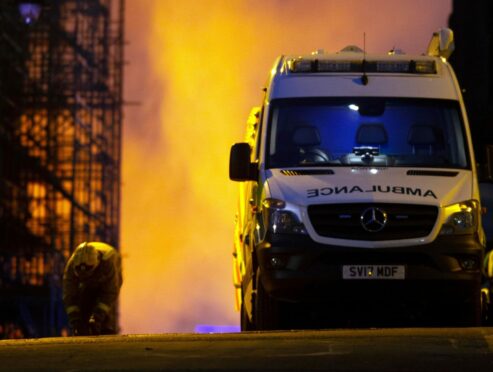
The fire that destroyed Glasgow School of Art’s iconic Charles Rennie Mackintosh building in 2018 was both predictable and preventable, experts have warned, after reading a long-delayed report into the blaze.
The Scottish Fire and Rescue Service (SFRS) took almost four years to investigate the fire but, in its report published on Tuesday, concluded the cause could not be established because of the extent of damage and destruction of physical evidence. It recorded the cause as undetermined.
Wilful fire-raising, electrical failure or accidental ignition linked to the ongoing work to restore the building after a previous fire in 2014 could not be ruled out.
However, Stephen Mackenzie, an independent fire safety consultant, said: “We lost a national treasure, and it was fully predictable and preventable, irrespective of the cause. The fire could have been inhibited or limited.”
The art school’s ventilation system was a major contributor to fire ripping through the building in the first blaze in 2014. Last week’s report said that before the second fire many of the ventilation ducts were exposed and unprotected to allow wiring and plumbing to be installed during the rebuilding project. Some ducts had been fitted with fire dampers but were not operational.
The report said: “As a result of the refurbishment work undertaken prior to the 2018 fire, the original ventilation system played an even greater role in supporting smoke, heat and fire spread.”
It noted that large quantities of combustible materials had been either fitted or were stored throughout the building waiting to be installed.
The report said it was not known if a scaffolding movement alarm system was functioning properly on the evening of the fire, adding: “It was reported that problems existed with reliability, and coverage did not extend to the entire scaffolding structure.”
Mackenzie, who gave evidence to MSPs about the fire in 2018 and is calling for a public inquiry, said: “It’s very unclear whether the fire alarm system operated or not, and that’s a line of inquiry for me.”
According to the report, on the night of the fire, June 15, 2018, at 9.45pm, one hour and 34 minutes before the first 999 call, a man walking along Renfrew Street noticed a smell of “burned material”.
But the “first indications of unusual activity” noticed by the nightshift security guard were a series of noises at 11.10pm. He went to investigate and saw fire and sparks in what he described as a crawl space or a duct.
He called 999 at 11.19pm, and the first fire engines arrived at the scene within six minutes but half of the building was well alight within 38 minutes of their arrival.
The report said fire safety measures should have been subject to regular maintenance and testing but that records were lost in the fire. A fire warning system control panel and the CCTV hard drive were too badly damaged by the blaze.
The report also revealed the day-shift security guard returned to the art school to pick up a personal item from the security desk at 8pm, and then returned between 9pm and 9.30pm to collect a piece of building memorabilia for a friend.
When the night-shift security guard later called the day-shift guard about the fire, the day-shift guard said he was standing at a bus stop in Bath Street waiting on a bus to take him home but that he would make his way back to the site.
Mackenzie said: “Why did the day-shift security guard need to go back for personal effects at 8pm, and then why did he go back between 9pm and 9.30pm for a piece of building memorabilia? What was that piece of memorabilia?
“That security guard was also still in the area at 11pm. What did he have to say for his movements?
“There were also reports that the fire warning system and the scaffold alarm systems had repeated faults but there’s no independent record of that. It has allegedly all been lost in the fire. Why wasn’t the CCTV monitored remotely? Why weren’t there off-site records? That’s poor practice.
“Why wasn’t there any fire signal reported by anyone? That lends me to suggest that the fire system is never re-enabled, it was defective, there was a fault, or the security guard fell asleep.”
The day-to-day management of the site was under the control of the main contractor, Kier Construction Scotland.
Mackenzie said: “I think Glasgow School of Art are being delinquent by saying the contractors control the site. That’s an easy exit for them but it’s wrong and it doesn’t stack with the Construction (Design and Management) Regulations to appoint someone who is competent and have an appropriate management supervisory regime.
“The art school may think they’re off the hook because the cause of the fire is undetermined. No, the fire was predictable, it was preventable and they should have learned their lesson the first time.”
Mackenzie said MSPs should hold further hearings following the publication of the report.
He said: “Ultimately, the file service report raises more questions than answers. I’m seeing some red flags here, so if I was the Scottish Parliament’s culture committee, I would be asking more questions.”
The committee found in 2019 the Glasgow School of Art board had not given sufficient priority to safeguarding the famous Mackintosh building.
It expressed concern about the time it took for a modern mist suppression system to be installed, which was not in place when the second fire broke out.
Another fire safety expert, Stewart Kidd, who wrote Historic Scotland’s fire safety guide, also gave evidence to Holyrood’s culture committee.
He told The Sunday Post: “When you have an existing building being refurbished, regardless of whether it’s post-fire or not, there is a tendency to remove structure, including fire doors and other fire safety elements, to make the work easier.
“There’s also a problem of introducing combustible materials, which are then stacked up or stored in the building, waiting for use. All of those things lead to a greater risk from fire.
“When I do a construction site fire inspection, and I do lots of these for insurers, one of the things I’m looking for is how can a fire spread if one starts. And the only way to stop that fire spreading is either to install the sprinkler system early, which could have been done here, or keeping fire doors and fire compartmentation in place until it really had to be moved.”
The fire report said in the week of the second blaze, work included the library on the west side of the building having finishing coats of paint, doors being stripped of old paint and renovated, floors being sanded, roofing and masonry work being carried out, electrics being installed and ceilings being plastered.
Yet new pumps for the fire suppression system had been put in place on level one of the building but had not yet been installed.
Kidd said: “If that had been working, then almost certainly there wouldn’t have been the second fire.”
Following the publication of the report, Professor Penny Macbeth, GSA director, and Kristen Bennie, interim chairwoman of the GSA board of governors, said: “While the SFRS Fire Investigation Report is detailed and comprehensive, we share the frustration that many will feel that the exact cause of the fire has not been identified.
“Taking time to study and consider the report thoroughly, in particular the recommendations, we will now undertake and share a lessons learned exercise on all aspects of the restoration to inform future construction projects.”
They also said they were committed to a faithful reinstatement of the Mackintosh building.

Enjoy the convenience of having The Sunday Post delivered as a digital ePaper straight to your smartphone, tablet or computer.
Subscribe for only £5.49 a month and enjoy all the benefits of the printed paper as a digital replica.
Subscribe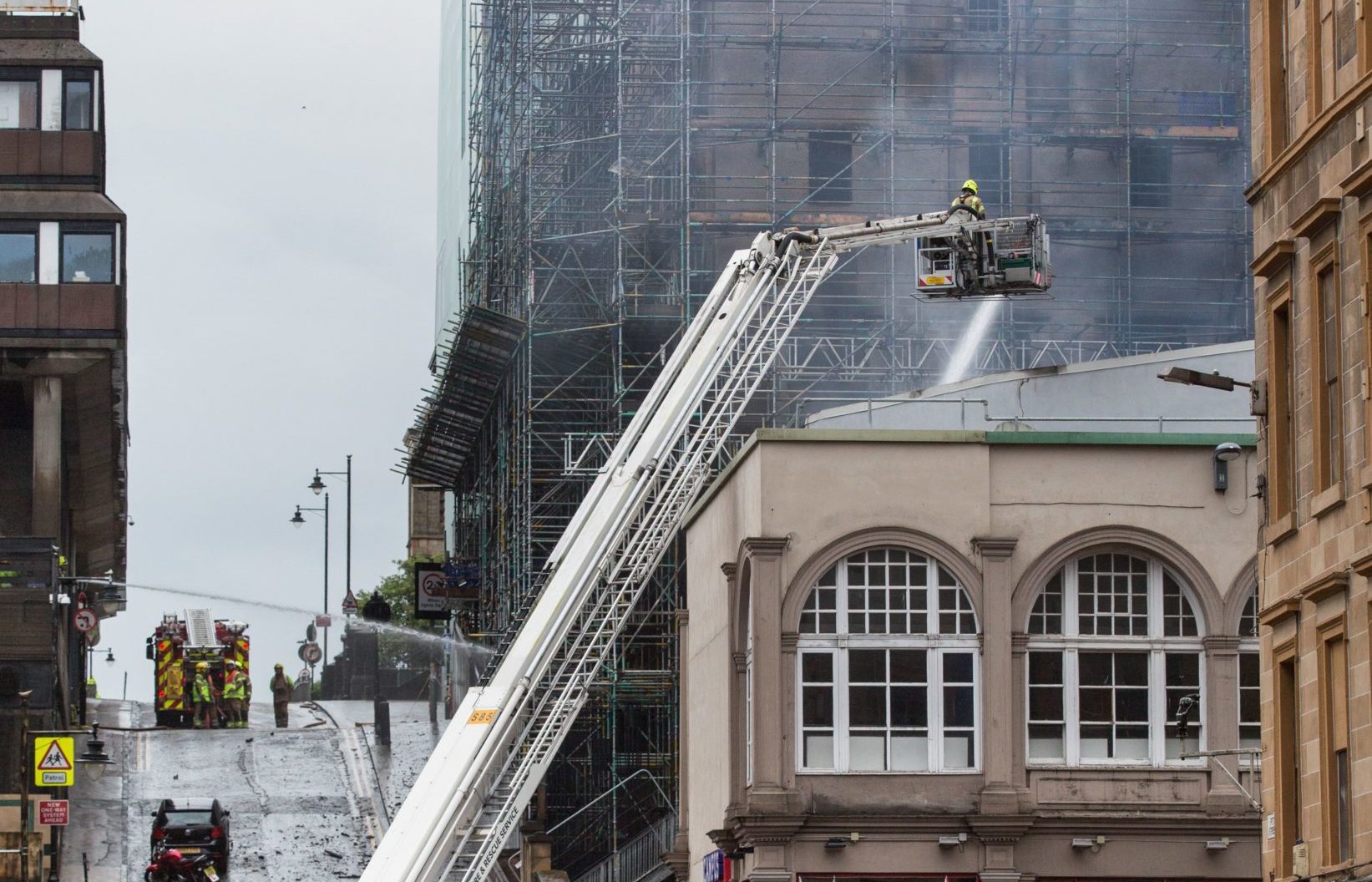 © Robert Perry/EPA-EFE/Shutterstock
© Robert Perry/EPA-EFE/Shutterstock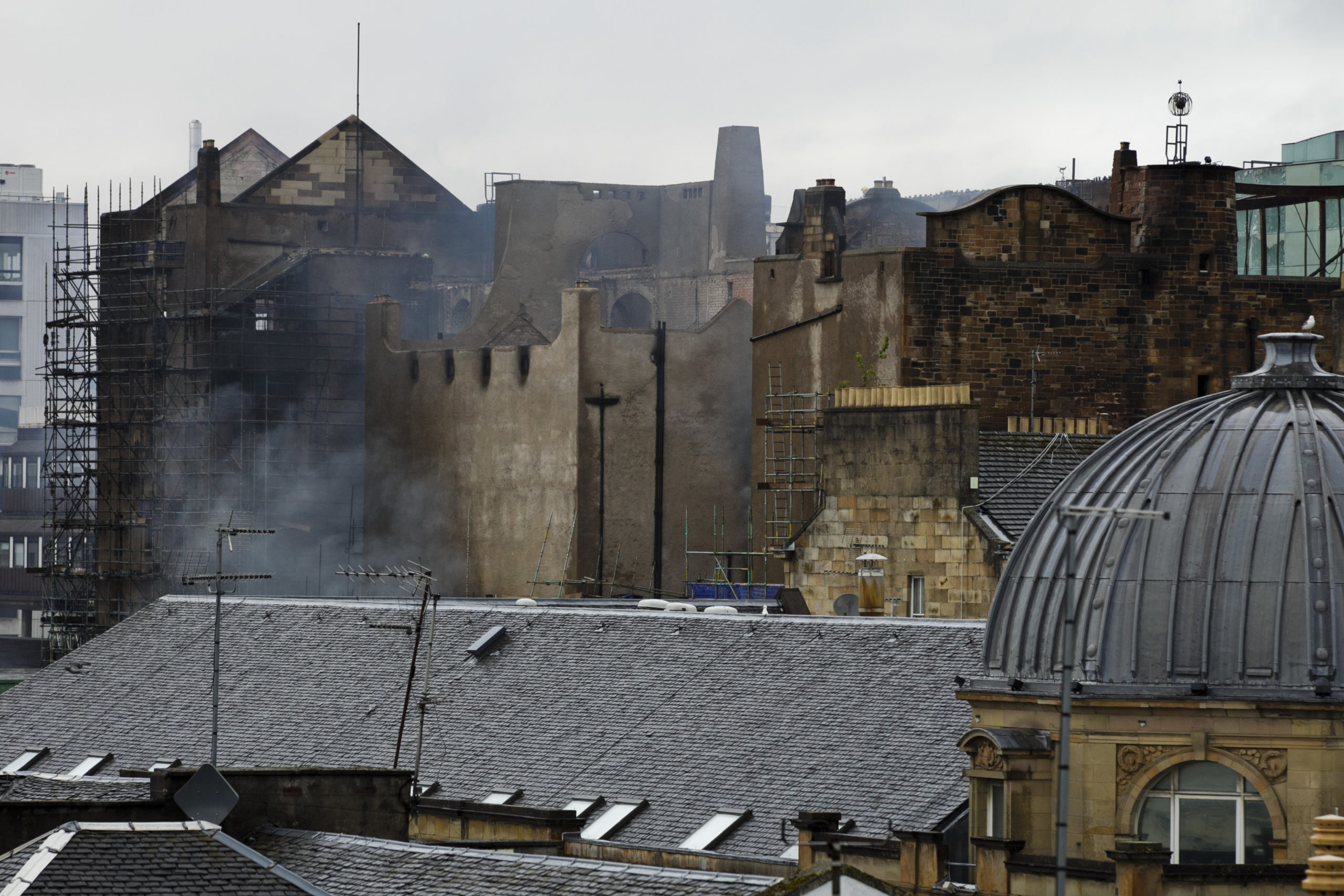 © Andrew Cawley
© Andrew Cawley